Featuring one of the tallest residential buildings in Germany, Gropiusstadt was one of the most ambitious projects of its era. Conceived by the famous Bauhaus architect Walter Gropius and materialized in the 1960s, Gropiusstadt is still home to more than 30,000 people. Partly a project descriptive of its time and partly a historical necessity, this satellite city in Berlin has seen turbulent times.
Despite its proximity to the city center—roughly 15 km from Alexanderplatz or Kudamm—Gropiusstadt remains off the radar for both locals and travelers. Although parts of Walter Gropius’s initial idea were betrayed during its creation, Gropiusstadt has an extreme architectural interest.
It was only recently that I decided to revisit Gropiusstadt. Despite living in Berlin for almost fifteen years, it was only my second visit to the satellite city. But this time, I wanted to explore it further and see how it feels to live there. In the following lines, you’ll find various info about the area and plenty of my photos.
Let’s begin.
*Some links are affiliate links. It means that if you buy something, I might earn a small commission at no additional cost to you.
What (and where) exactly is Gropiusstadt?
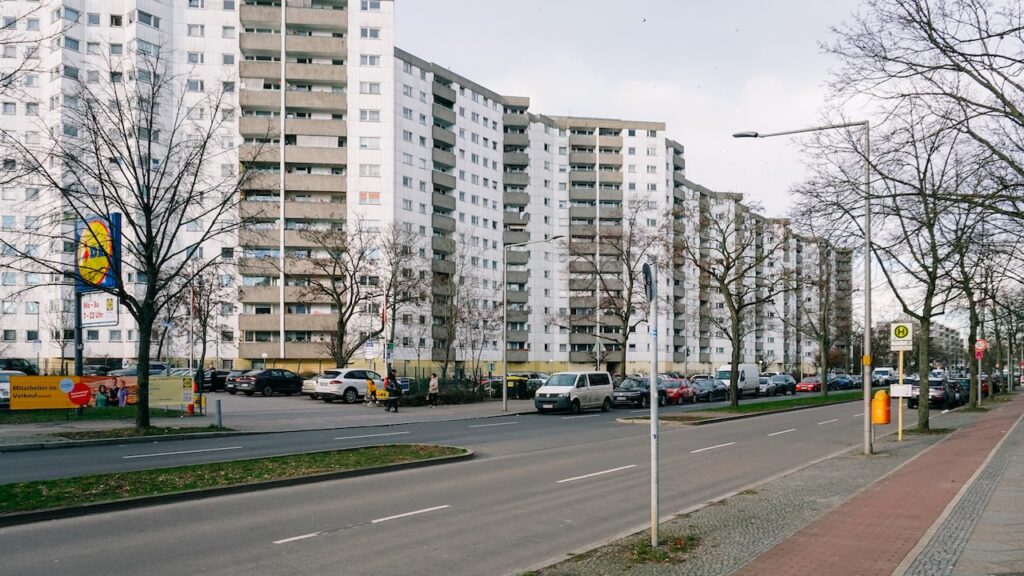
Located on the edge of the Neukölln district but bordering Britz, Buckow, and Rudow, Gropiusstadt tried to become a prototype of future cities. Although only after the Fall of the Wall did Berlin start experimenting with skyscrapers on its soil, Gropiusstadt’s concept embraced them from the beginning.
Walter Gropius envisioned a satellite city taking advantage of the city’s flat surface to create enough open space, circulation of fresh air, and lots of green spaces. As the founder of Bauhaus, Gropius wanted to implement all the key elements of the legendary architectural movement: functionality, simplicity, and affordable houses for everyone.
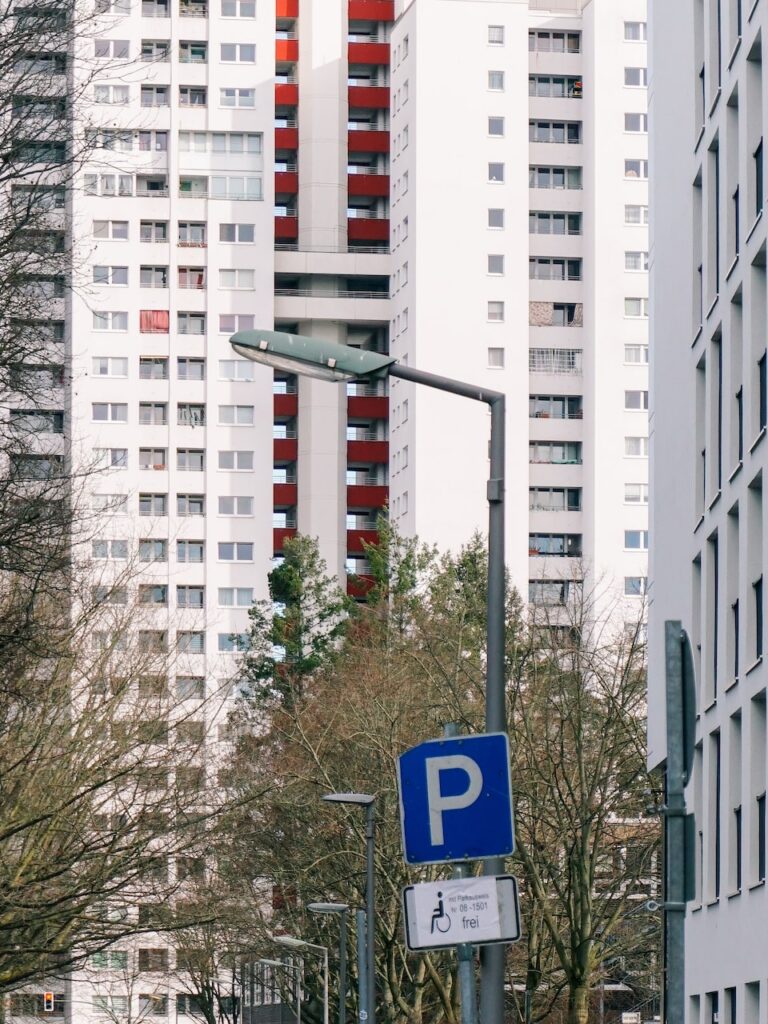
In the late 1950s, the Berlin Senate commissioned Walter Gropius to create a satellite city. It was meant to deal with the city’s housing problem, which became even more intense after the separation of the city from the Berlin Wall in 1961. The Urbanization, together with the limitations of the Wall, meant that Gropius should bring innovative ideas to the table.
The limited surface of West Berlin meant that the city could only expand in height. However, historical necessity was one of the points that finally led to the idea of the skyscrapers. According to the final plans, 19,000 apartments would be built to host more than 50,000 people.
Gropiusstadt wasn’t built according to Gropius’ plans
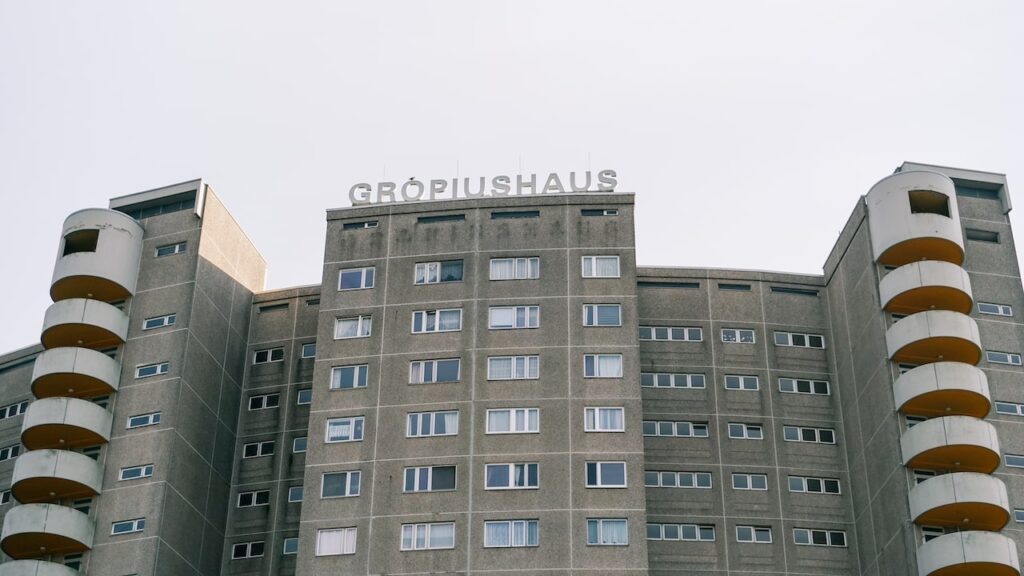
Hitler and the Nazis weren’t fond of the Bauhaus at all. In fact, they shut it down, and Gropius had to emigrate. When the Berlin Senate commissioned him to create a satellite city on the outskirts of Berlin, Gropius was living in the United States. Although the original plans were designed by Gropius, being so far away from the city meant that another architect should supervise the project’s completion. Despite Gropiusstadt translating to “The City of Gropius,” it was actually completed by Wils Ebert.
The housing shortage in West Berlin called for more radical solutions that dissatisfied Gropius. His vision was to create buildings with no more than five floors and enough green space around them for better connection to nature and infrastructure near the metro lines. Instead, the historical necessity of the Wall made the project turn into skyscrapers, and among them, the trademark of Gropiusstadt appeared: the Ideal Haus.
The Ideal Haus is still among the tallest residential buildings in Germany. It has 31 floors and rises 90 meters above ground. Its reputation as a building of suicides definitely paints a bleak image for the entire district, but this is a generalization that should be avoided.
Rightly assumed as a project of the 1960s, it is worth mentioning that the last building was constructed in 1975.
Immortalization through a book by Christiane F.
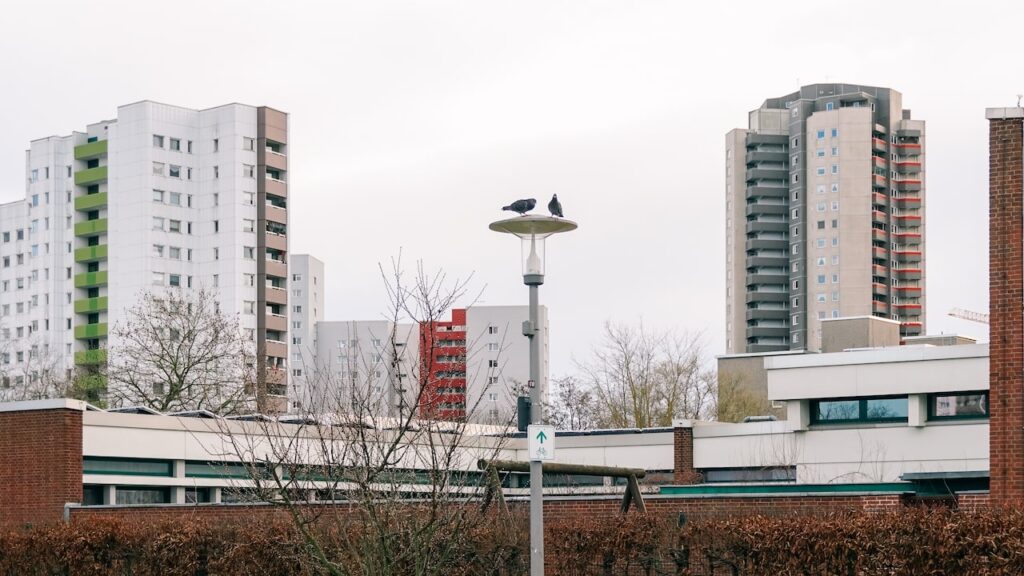
Despite its progressive approach, the Gropiusstadt was never really well perceived by Berlin’s middle class. Problems started to arise slowly, and living in the district wasn’t easy.
The darkness of the district was immortalized by a book that soon became iconic of the living conditions in Gropiusstadt. Written by Christiane F., her autobiographical book Wir Kinder vom Bahnhof Zoo (We, the Children of Zoo Station – 1978) is a tough read. In the book’s pages, Christiane F. describes her life in the district, how she developed a heroin addiction at the age of 13, and how she ended up a prostitute at Zoo Station.
My walk around Gropiusstadt
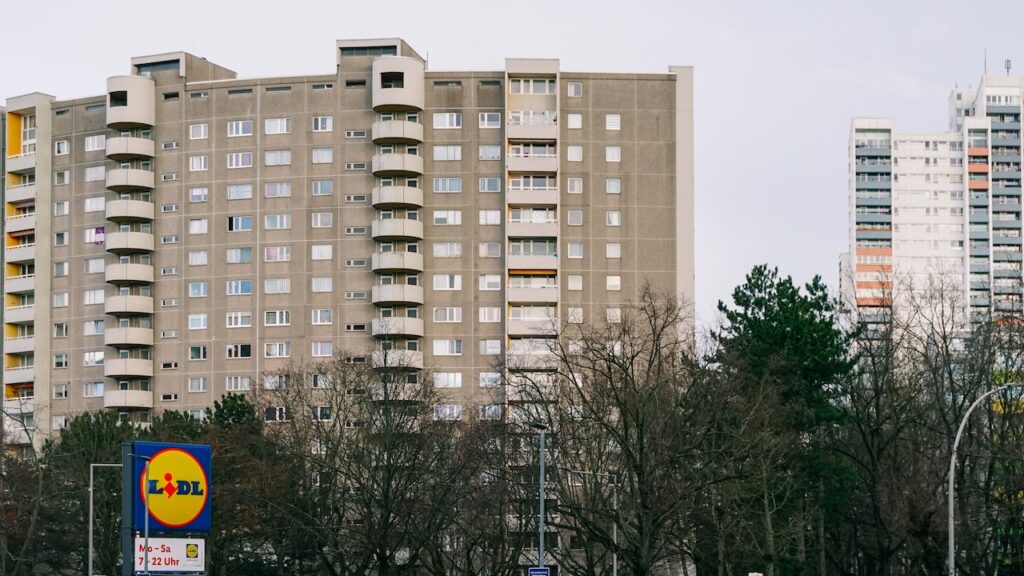
I decided to visit Gropiusstadt by bike. Although the district is served by four metro stops of the U7 line – Johannisthaler Chaussee, Lipschitzallee, Wutzkyallee, and Zwickauer Damm- I wanted to have a first-hand experience of the landscape. Specifically, I wanted to experience how close or far the district is and what the surrounding area looks like.
I live in the central part of Neukölln, and my bike ride started from Hermannplatz. The area is nowadays the epicenter of local life, with garlands of bars and hype restaurants unfolding in the nearby streets. From Hermannplatz, it is a straight line to Gropiusstadt. After the S-Bahn Neukölln, the city starts feeling less dense. The houses are becoming lower, the pavements wider and the traffic after the motorway’s exit is less intrusive.
As I kept cycling towards Gropiusstadt, I wondered if the open space on this side of Berlin was what Gropius wanted to use on the project. I then took a right turn at Lipschitzallee, and that’s where I first had a real impression of the Gropiusstadt.
Greeted by a church
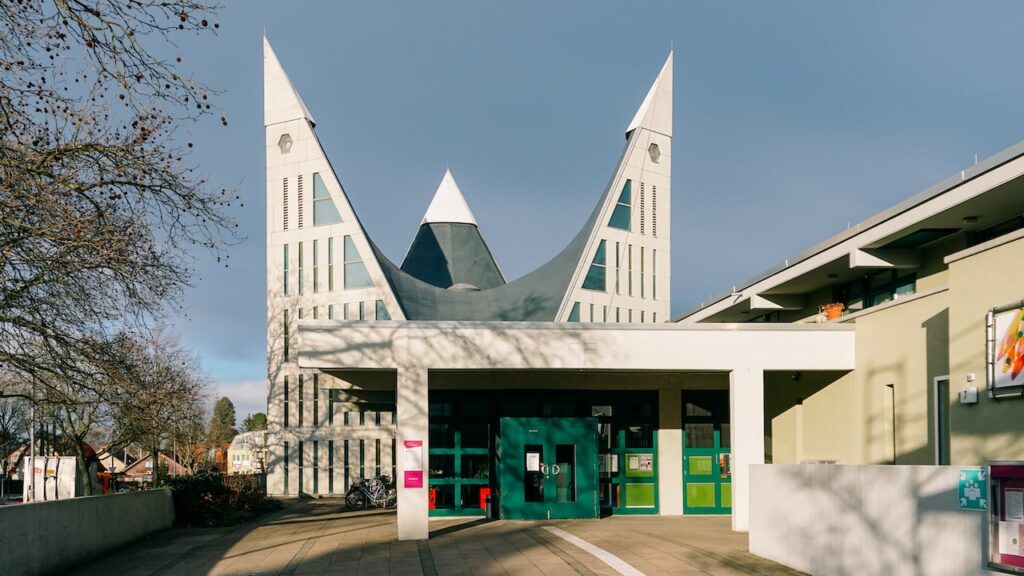
Oddly enough, the first building that caught my attention was a church. Straight after entering the Lipschitzallee from Rudower Strasse, I came across the Dreieinigkeitskirche. The church, designed by Reinhold Barwich and constructed between 1969 and 1971, is dedicated to the Trinity.
As you can see in the photo, the building is impressive.
The Gropiushaus
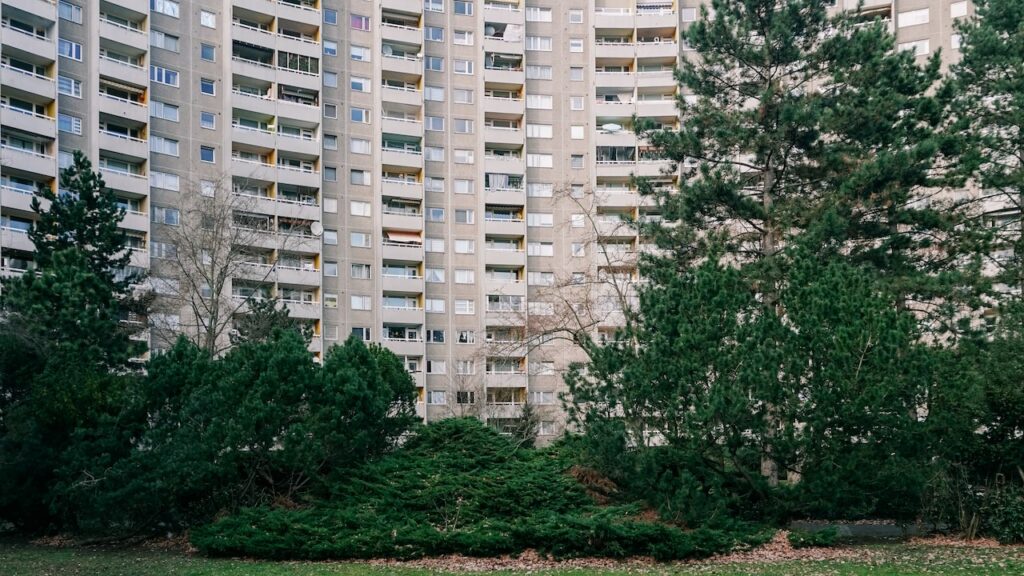
Although the Ideal Haus definitely catches the eye, I found the Gropiushaus to be the most interesting. The building embodies the idea of Gropius for communal living, and it has a semicircular style that seemingly embraces the courtyard. There are a few trees, and the flats view towards the Rudow forest to the south. Obviously, since this is a prototype, it is considered a monument—and the garden in front of it, too.
The Ideal Haus
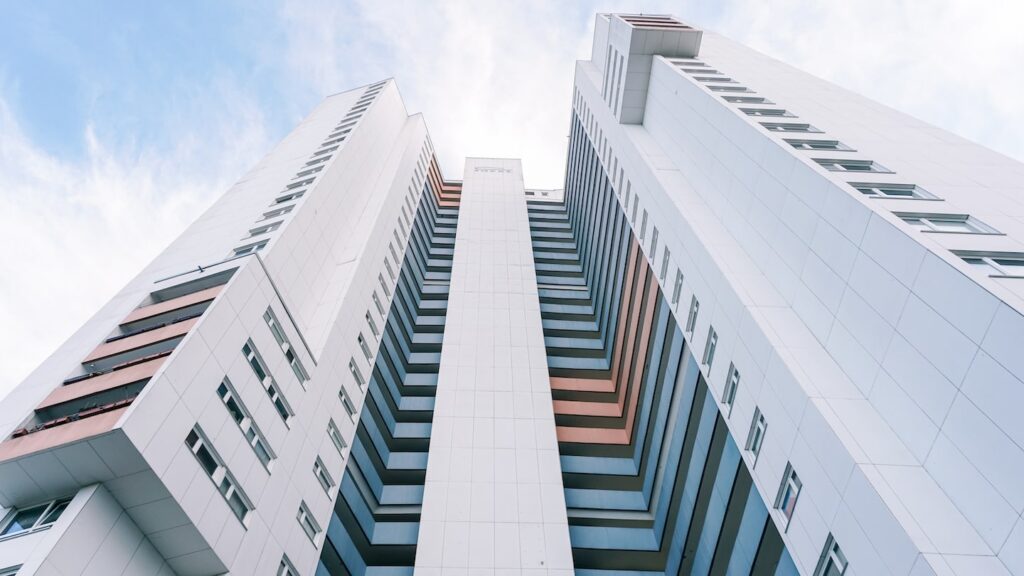
Of course, the Ideal Haus is equally impressive. Located at Fritz-Erler-Allee 120, it has 31 floors and 228 flats. Moreover, the building has three elevators that can accommodate up to 13 people, and reaching the 29th floor takes approximately 45 seconds. At its feet, you can find the Ideal Pavilion, a single-story structure featuring a beer garden.

And here’s a Gropiusstadt fan fact: on the first Sunday of the year, the Neukölln 1865 gymnastics and sports club organizes the so-called “Tower Run.” The participants should climb the 465 steps of the skyscraper as fast as possible. The current record is 3 minutes and 16 seconds. Not too bad, I think.
Other buildings
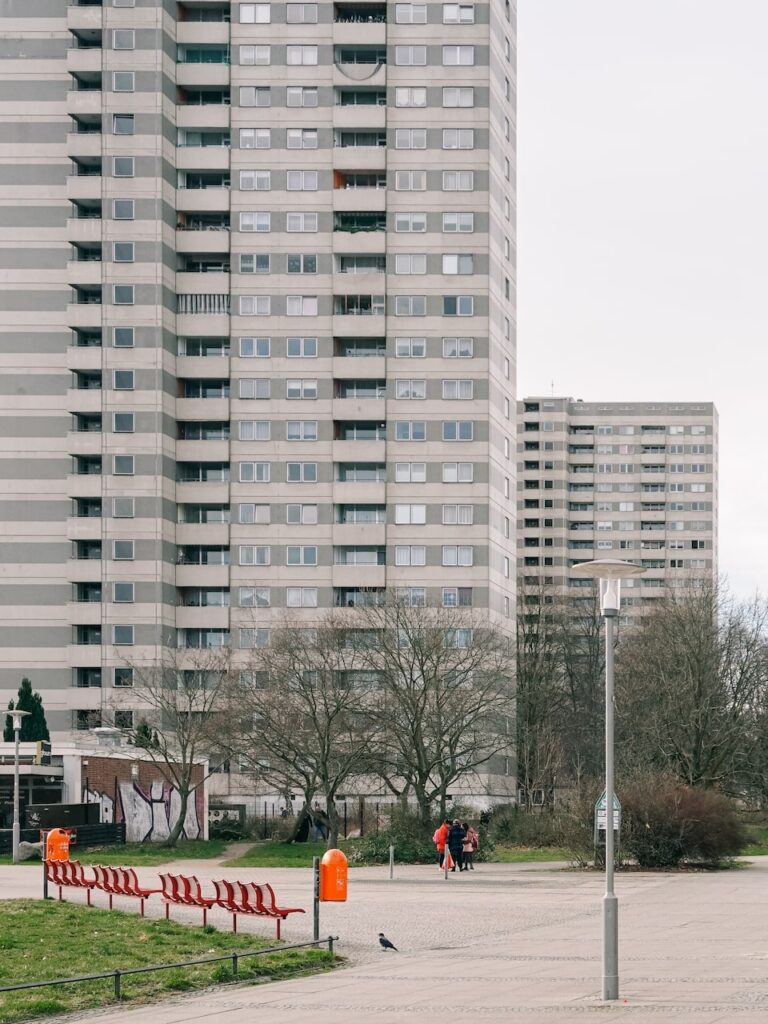
One of the four metro stations of Gropiusstadt.
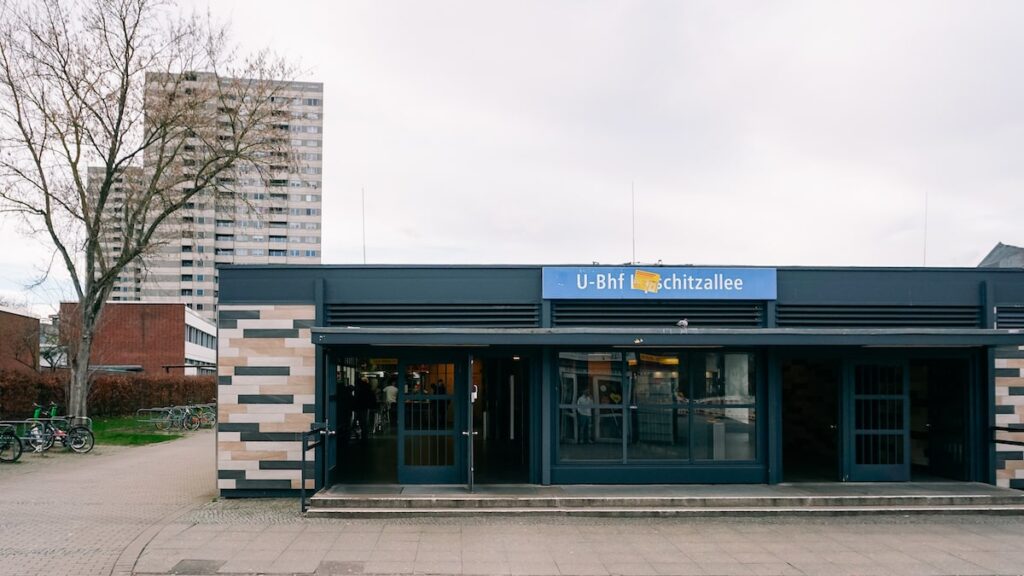
There are schools, stores, a shopping mall like the Gropius Passagen, and churches in Gropiusstadt, and this was part of the original idea: people could live and have a proper daily life without having to leave the district. They should have everything they need without the need to visit downtown Berlin. The concept of the satellite city should mean a self-sufficient place where its citizens could live happily.
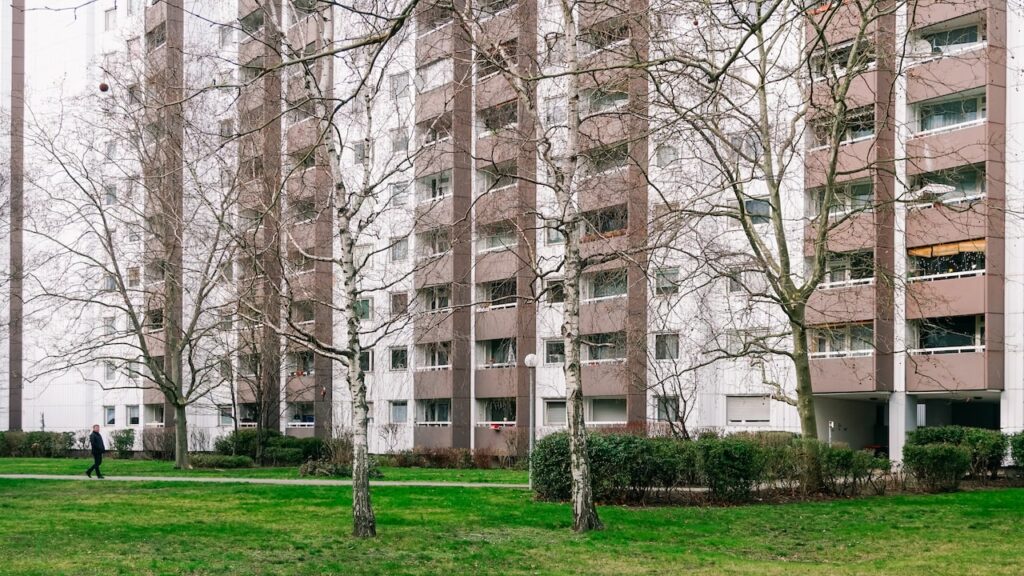
And here’s a rather bizarre monument: the so-called “Findling aus der Eiszeit” is a rock that has been there since the Ice Age.
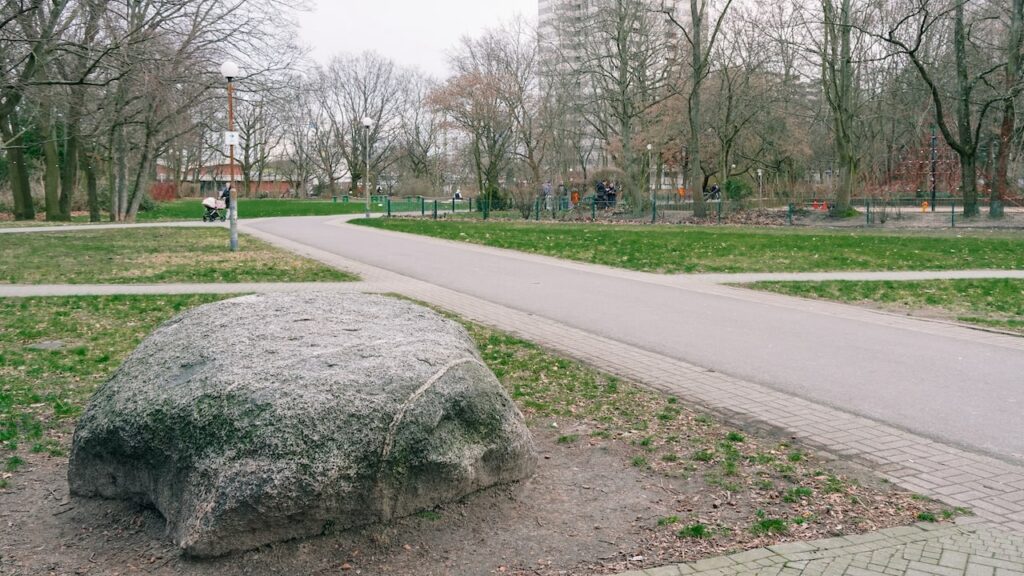
One more shot from the district’s buildings.
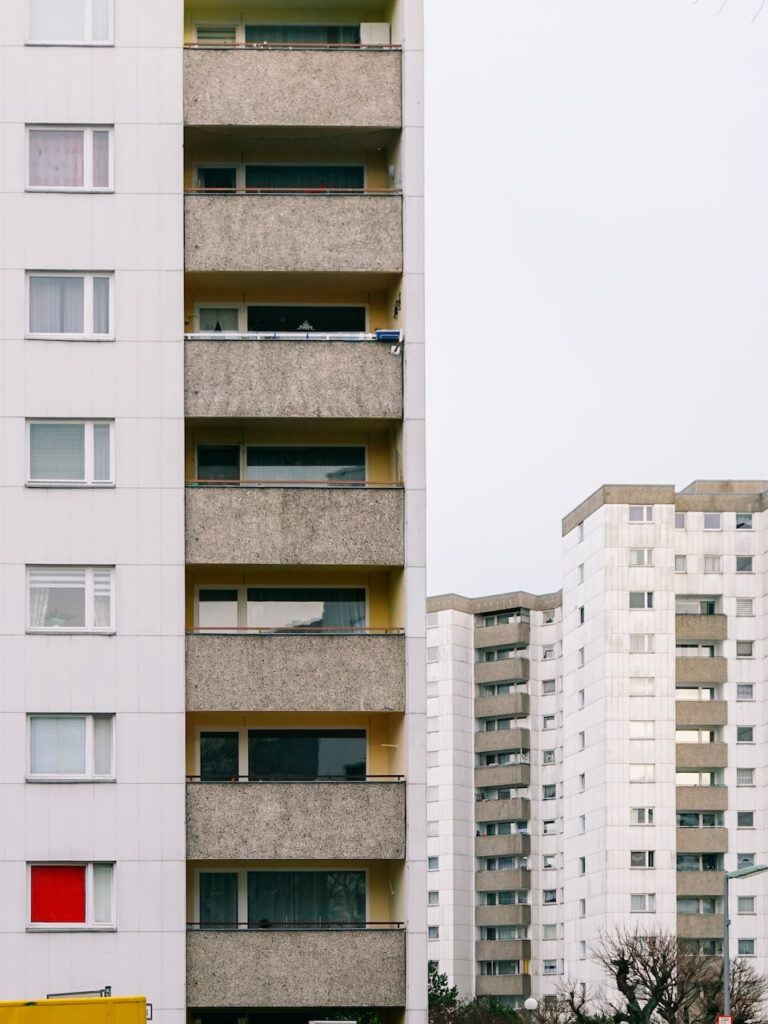
And here you can see some balconies.
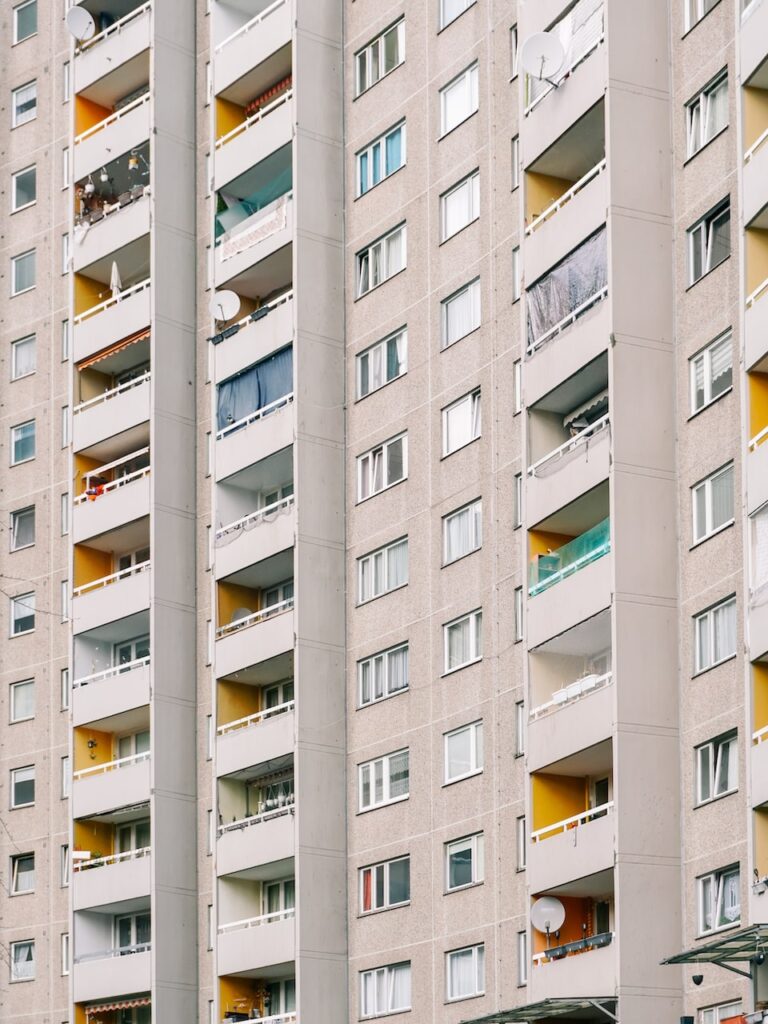
A visit to Gropiusstadt: Conclusion
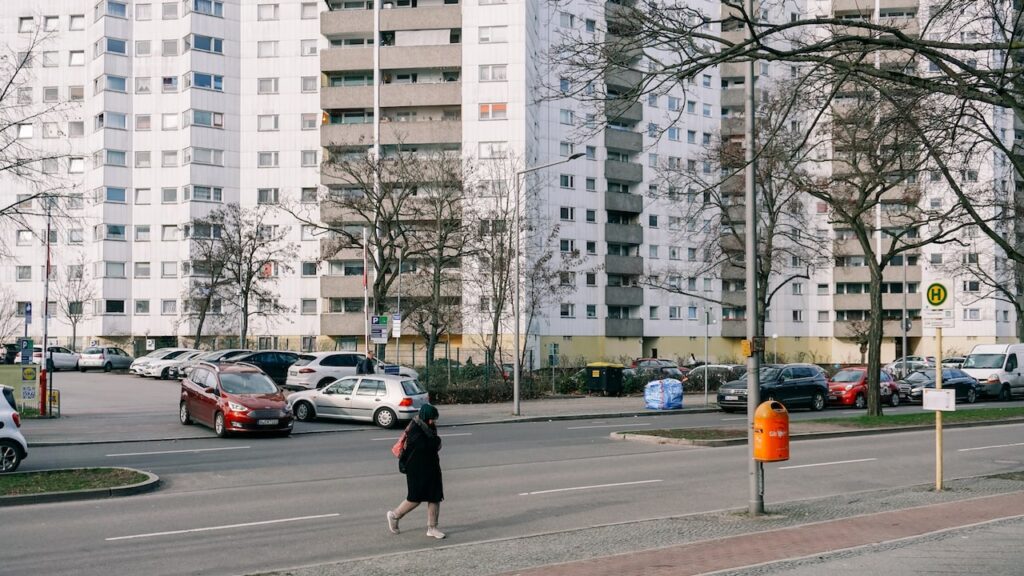
I won’t lie: I couldn’t live in Gropiusstadt. No, it’s not about criminality or similar reasons. The main thing that would keep me away from Gropiusstadt is more personal: it feels claustrophobic. Although the ideas of future or prototype cities (like Pienza, for example) fascinate me, I feel more comfortable in houses with fewer floors.
However, even if you are a first-time visitor to Berlin or an architecture lover, I believe that visiting and exploring Gropiusstadt is a unique experience. Apart from being often disregarded by locals, the atmosphere has a certain charm. You can see up close a unique architectural project and an example of Bauhaus in real life. Moreover, imagining how your life would be in such a district is enough to justify a visit there.
Social housing projects and future cities are always fascinating ideas to consider. I encourage you to enjoy a walk in Gropiusstadt’s vast spaces. And if you’re wondering which tall buildings you see from your airplane window when approaching the BER Airport from the south, well, now you know.
More about Berlin: 3 days in Berlin guide, DDR Museum, Dennezitzstrasse 2, Berlinale guide. Berlin by bike, Berlin facts, The Palace of Tears
Pin it for later

Sharing is caring. Share this article about Gropiusstadt in Berlin with your friends.
Last Updated on March 16, 2024 by George Pavlopoulos

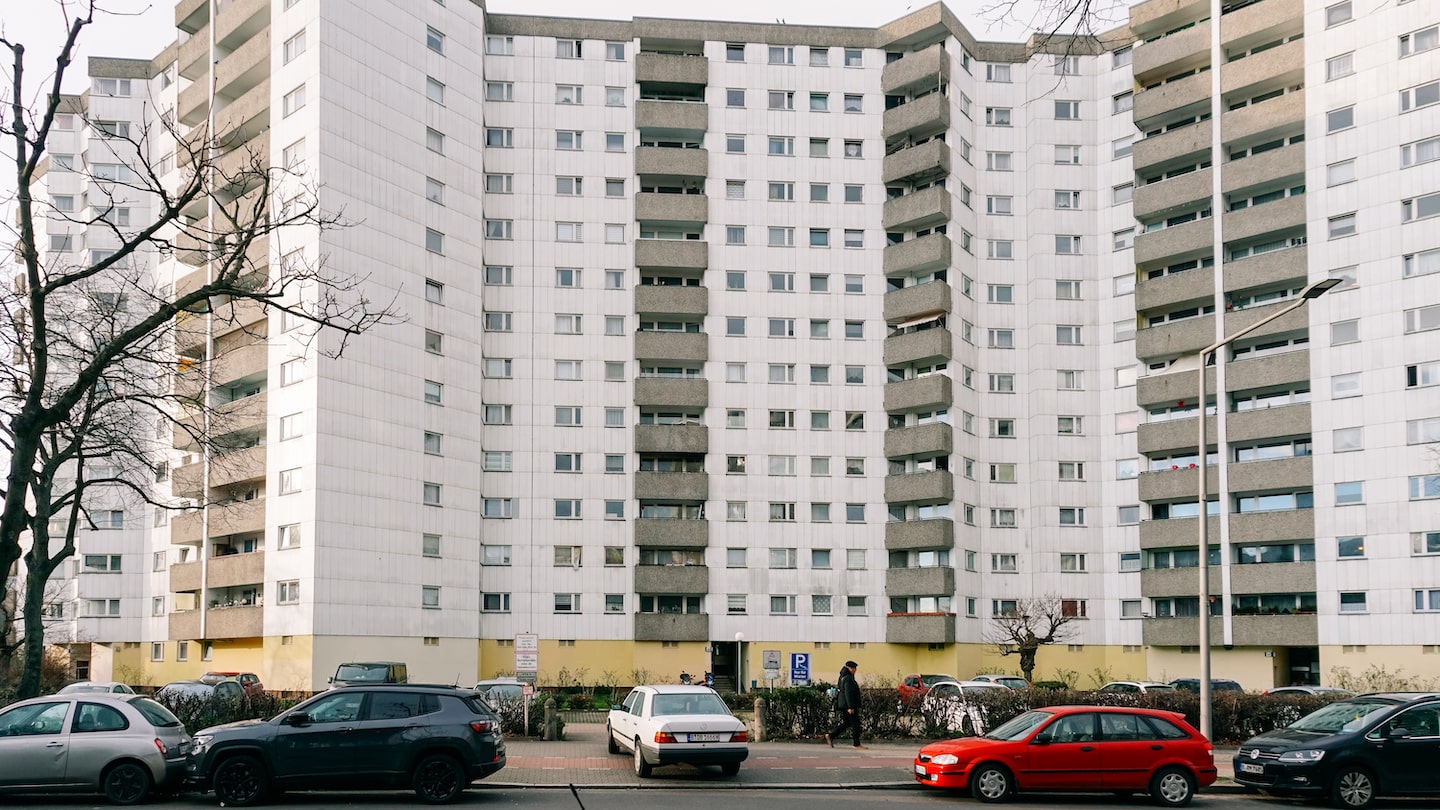

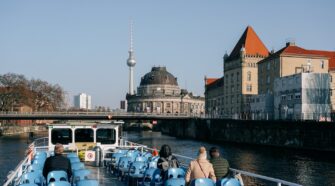

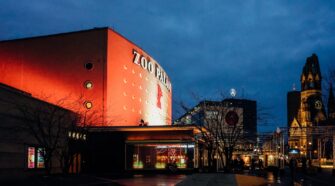
No Comment